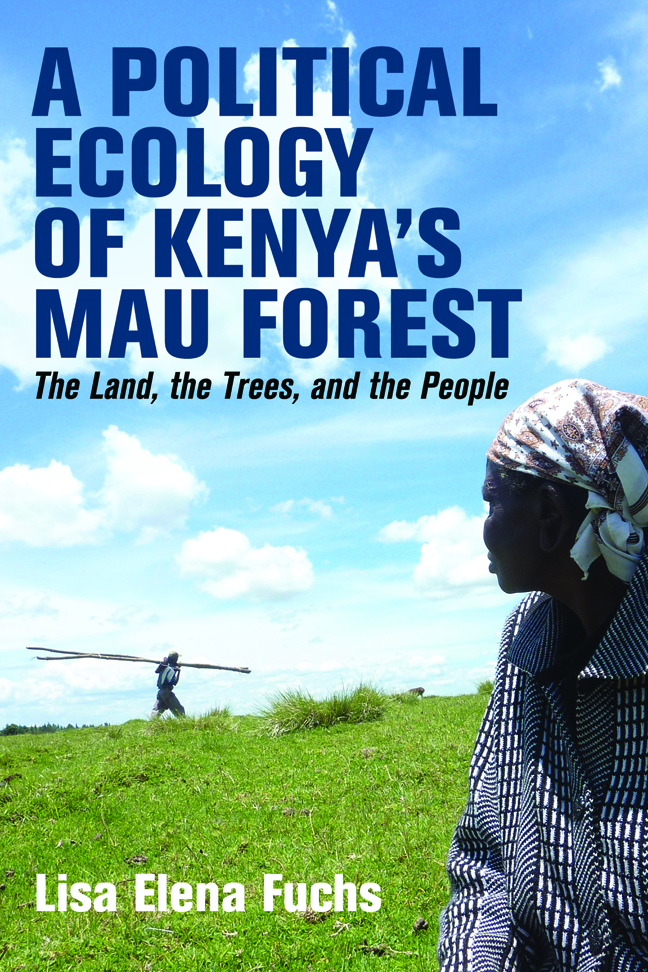Book contents
- Frontmatter
- Dedication
- Contents
- List of Illustrations
- List of Abbreviations
- Glossary
- Acknowledgements
- Introduction
- 1 The Politics of Conservation Aid: The Development State and ‘Saving the Mau’
- 2 Institutional Failure or Setting Priorities? The Continuation in Exploitation-focused Forest Management
- 3 The Political Economy of Land: Maintaining Control over Forest Land Allocation and Distribution
- 4 The Politics of Belonging and Exclusion in Response to Changes in the Eastern Mau: The Complex Definition of Legitimate Land and Resource Use
- Conclusions
- Appendix 1 Medicinal plants used and inventoried by survey respondents in the Eastern Mau in 2012–2013
- Appendix 2 Full overview of interview partners
- Bibliography
- Index
- Eastern Africa Series
3 - The Political Economy of Land: Maintaining Control over Forest Land Allocation and Distribution
Published online by Cambridge University Press: 10 January 2024
- Frontmatter
- Dedication
- Contents
- List of Illustrations
- List of Abbreviations
- Glossary
- Acknowledgements
- Introduction
- 1 The Politics of Conservation Aid: The Development State and ‘Saving the Mau’
- 2 Institutional Failure or Setting Priorities? The Continuation in Exploitation-focused Forest Management
- 3 The Political Economy of Land: Maintaining Control over Forest Land Allocation and Distribution
- 4 The Politics of Belonging and Exclusion in Response to Changes in the Eastern Mau: The Complex Definition of Legitimate Land and Resource Use
- Conclusions
- Appendix 1 Medicinal plants used and inventoried by survey respondents in the Eastern Mau in 2012–2013
- Appendix 2 Full overview of interview partners
- Bibliography
- Index
- Eastern Africa Series
Summary
The Kenyan government defined recovery of Public Land as one of the main actions required to enable the rehabilitation of the ailing Mau Forest, indicating that ‘illegal and ill-planned’ (GoK, 2009e) land distribution had significantly contributed to the environmental crisis in the Mau. In the same vein, the five-phase spatial-temporal plan pursued by the Interim Coordinating Secretariat (ICS) in the very beginning of the ‘Save the Mau’ initiative in late 2009 and early 2010 focused primarily on securing forest land that had been degazetted in 2001. The over 30,000 ha of forest land that was transformed to settlement schemes in the Eastern Mau in the 1990s (see Table 1 in the Introduction) fell into that category. As illustrated by the fact that Chapter 5 of the 2010 Constitution is concerned with ‘Land and Environment’, and in line with the overall assumptions of political ecology, land and regulations about land are of primary importance for environmental crises.
The politicised environment: Seeing the land below the forest and the trees
Since the livelihoods of about 80% of Kenyans require direct access to land (Development Partnership Forum, 2010), while only about one-fifth of the land receives enough rainfall for extensive and productive agriculture (Lusigi, 1981), and hence qualifies as fertile (Ville, 1998), presumed inequalities in land tenure continually have been one of the most important sources of social and political conflict in Kenya.
Injustice in distribution and access to land at the basis of the modern Kenyan state
Injustice in distribution and access to land can be described as one of the founding momentums of the modern Kenyan state (Anderson, 2005; Calas, 1998; Connan, 2005; Woodhouse, Bernstein, & Hulme, 2000). Injustices in land distribution were established as a historical fact, from the colonial period to the present. Historically, since the beginning of the colonisation of the Kenyan territory, much of the most productive land was alienated by colonialists. Ever since the institutionalisation of the White Highlands, these European settlers established vast properties, either for cattle rearing or for the cultivation of crops. By 1922, about 10,000 Europeans had settled in the territory, holding a virtual monopoly over the best lands (Cheeseman, 2006). On three million hectares of fertile lands, they established only four thousand farms and estates, figures providing interesting insights into the average size of the respective properties.
- Type
- Chapter
- Information
- A Political Ecology of Kenya's Mau ForestThe Land, the Trees, and the People, pp. 144 - 195Publisher: Boydell & BrewerPrint publication year: 2023

